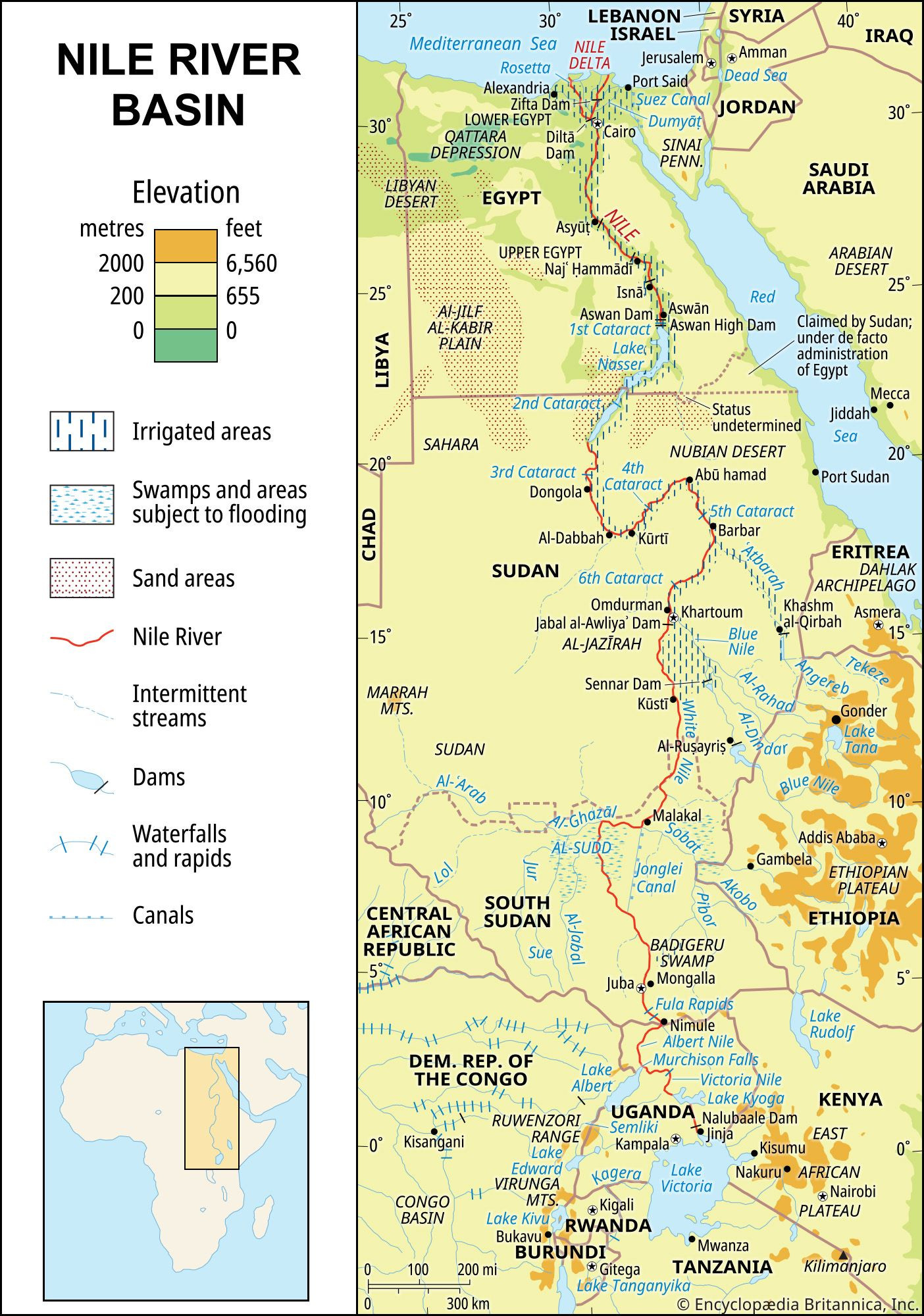The Nile River, revered as the lifeblood of ancient civilizations and often called the “father of African rivers,” is a geographical marvel. Spanning an incredible 4,132 miles (6,650 kilometers), it holds the title of the longest river in the world. But where does this majestic river actually begin its journey? The answer is more complex than a single point on a map, involving a network of rivers and lakes stretching across northeastern Africa.
 Nile River basin and its drainage network
Nile River basin and its drainage network
The Nile River’s source isn’t a singular, easily identifiable location. Instead, it’s a vast basin encompassing parts of eleven countries: Tanzania, Burundi, Rwanda, Democratic Republic of the Congo, Kenya, Uganda, South Sudan, Ethiopia, Sudan, and Egypt. This expansive drainage basin, estimated at 1,293,000 square miles (3,349,000 square kilometers), highlights the Nile as a complex system fed by numerous tributaries and headstreams. To truly understand where the Nile starts, we need to explore its primary sources.
The Nile is fundamentally formed by three main river systems: the White Nile, the Blue Nile, and the Atbara River. Each of these contributes significantly to the Nile’s overall flow and character, and tracing them back reveals the multifaceted origins of this iconic river.
The White Nile is often considered the primary stream of the Nile, and its headwaters can be traced to the Great Lakes region of Central Africa. Specifically, Lake Victoria, the largest lake in Africa, feeds into the White Nile. However, even further upstream, the Kagera River in Burundi is considered the most distant source of the entire Nile system. This makes the Kagera River, in Burundi, the ultimate source point when considering the longest continuous flow of water that eventually becomes the Nile.
While the White Nile provides a consistent flow of water throughout the year, the Blue Nile, originating in the Ethiopian Highlands, contributes the majority of the Nile’s water volume, especially during the flood season. Lake Tana in Ethiopia is the source of the Blue Nile. The Atbara River, also originating in the Ethiopian Highlands, is another significant tributary that joins the Nile in Sudan, further augmenting its waters.
Therefore, pinpointing the exact start of the Nile River depends on how “start” is defined. If we’re seeking the geographically furthest point of origin, it’s the Kagera River in Burundi. If we consider the most substantial headstream, it’s the White Nile flowing from Lake Victoria. And if we account for the largest water volume, the Blue Nile from Ethiopia takes precedence.
In conclusion, the Nile River’s origin is not a single spring or lake, but rather a complex network of sources. The Kagera River represents the most distant source, while Lake Victoria and Lake Tana serve as major headwaters for the White Nile and Blue Nile respectively. Understanding “where the Nile starts” requires appreciating this interconnected river system, highlighting the Nile’s vast reach and its dependence on diverse geographical regions for its enduring flow to the Mediterranean Sea. This intricate system has not only shaped the landscapes of northeastern Africa but also nurtured civilizations for millennia, cementing the Nile’s place as a truly remarkable river of global significance.

